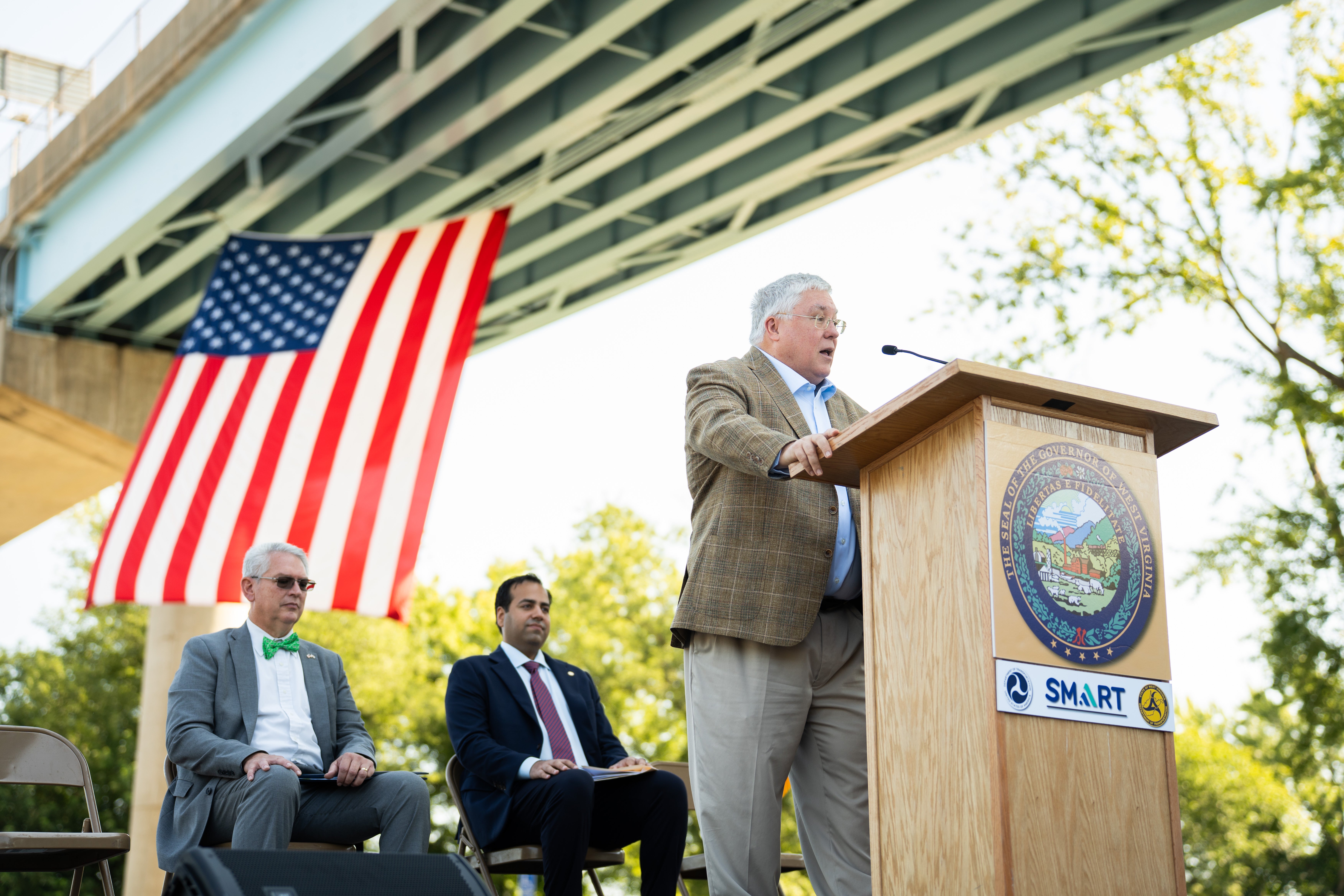CHARLESTON, W.Va. — Today, Governor Morrisey, alongside West Virginia Secretary of Transportation Todd Rumbaugh and U.S. Department of Transportation Director of Strategic Initiatives Shaz Umer, highlighted the success of the Structural Health Monitoring (SHM) system made possible by the federal SMART grant program.
“When I took office earlier this year, I made it my mission to transform our Department of Transportation to prioritize the improvement of our bridges and secondary roads,” said Governor Morrisey. “This innovative technology is a clear step toward building a safe future for every West Virginian who travels our roads and bridges.”
The SHM system is a network of sensors to provide real-time data that allows engineers to quickly detect stress, movement, or potential structural damage, first installed on the Gunner Gatski Bridge in Huntington. It includes accelerometers, crack meters, tilt sensors, and vessel collision detectors. These tools provide continuous data that allows engineers to quickly address threats that could go undetected for months or even years.
West Virginia is the first state in the country to use the Stage One SMART Grant from the U.S. Department of Transportation specifically for this type of advanced bridge monitoring.
“This technology gives us a clearer picture of what’s happening on our bridges at any given moment,” said Secretary Todd Rumbaugh. “It’s a smarter, safer, and more cost-effective way to manage infrastructure and it helps us target our resources where they’re needed most.”
The successful implementation of this system positions the state to compete for a Stage Two SMART Grant, potentially bringing in up to $15 million in federal funding to expand the sensor network to other high-risk bridges statewide.


